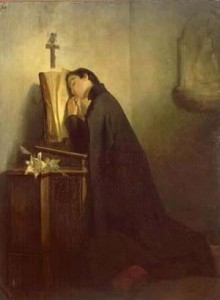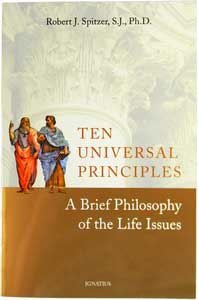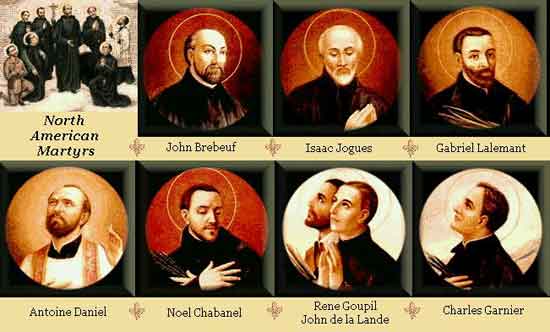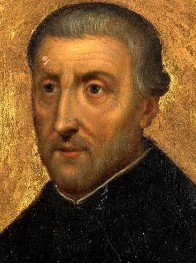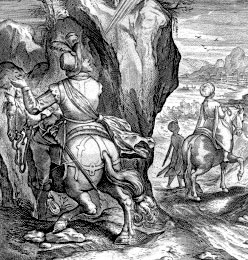 The video above provides a wonderful telling of the experiences of St. Ignatius prior to founding the Jesuits. Â Contained in those stories is the encounter St. Ignatius had with a Moor on the road, and how a mule aided him in a time of much needed discernment. Â A fascinating tale.
The video above provides a wonderful telling of the experiences of St. Ignatius prior to founding the Jesuits. Â Contained in those stories is the encounter St. Ignatius had with a Moor on the road, and how a mule aided him in a time of much needed discernment. Â A fascinating tale.
Tags: discernment, jesuits, st. ignatius of loyola
This entry was posted on Wednesday, July 31st, 2013 at 12:45 am
You can follow any responses to this entry through the RSS 2.0 feed.
Fr. James Martin joined us to share the compelling story of St. Charles Lwanga and the Martyrs of Uganda.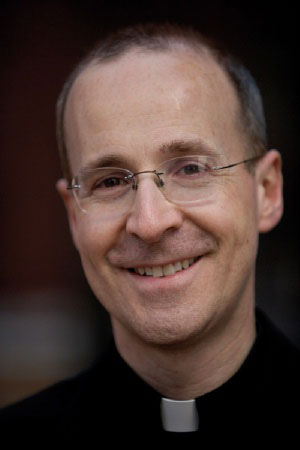
[powerpress]
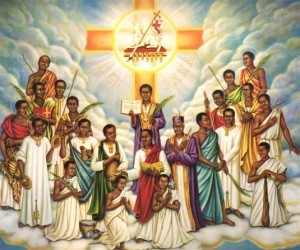 Owing to religious hatred, many faithful Christians were killed in Uganda by King Mwanga during the years 1885-87. some of them had enjoyed the good graces of the king at his court, and some were even related to him. Among them, Charles Lwanga and his twenty one companions, adhering steadfastly to the Catholic faith, were put to death, some by sword, others by burning, because they would not accede to the king’s unreasonable demands.
Owing to religious hatred, many faithful Christians were killed in Uganda by King Mwanga during the years 1885-87. some of them had enjoyed the good graces of the king at his court, and some were even related to him. Among them, Charles Lwanga and his twenty one companions, adhering steadfastly to the Catholic faith, were put to death, some by sword, others by burning, because they would not accede to the king’s unreasonable demands.
Father, You have made the blood of the martyrs the seed of Christians. May the witness pf Saint Charles and his companions and their loyalty to the Christ in the face of torture inspire countless men and women to live the Christian faith. We ask this through our Lord Jesus Christ, Your Son, who lives and reigns with You and the Holy Spirit, one God, for ever and ever. Amen.
(Source:Â Liturgy of the Hours)
Tags: africa, america, american magazine, Charles Lwanga, holy spirit, jesuits, Lord Jesus Christ, martyrs, Saint Charles, ugandan martyrs
This entry was posted on Monday, June 3rd, 2013 at 2:35 am
You can follow any responses to this entry through the RSS 2.0 feed.
Who is Aloysius Gonzaga?
I didn’t know anything about him until I traveled to Rome and visited the Church of St. Igantius of Loyola. Â I encountered this beautiful altar dedicated to this young saint who died at the age of 23. Â I wanted to learn about this youth who was so highly venerated by the Society of Jesus, who even someone as great as St. Robert Bellarmine wanted to be buried near. His story is poignant and a strong witness to the power of grace, no wonder they love him so.
from Gonzaga.edu
Aloysius is the Latin form of Gonzaga’s given name, Luigi. In English, the equivalent form would be Louis. The Gonzaga name is well known in Italy. Aloysius Gonzaga was born at Castiglione near Mantua, Italy, in 1568 to a celebrated family of wealth and prestige. As the first born son of his father, Ferrante, and his mother, Marta, he was in line to inherit his father’s title of Marquis. He grew up amid the violence and brutality of the Renaissance Italy and witnessed the murder of two of his brothers. In 1576, Aloysius’ parents sent him to attend the court of the Grand Duke of Tuscany, Francesco de’Medici, in Florence. Later, accompanied by his parents, he traveled to Spain to join the court of Philip II in Madrid.
In Spain, Aloysius decided he wanted to join the newly founded religious order, The Society of Jesus. His father resisted his decision and there followed a struggle of wills that continued after his return to Castiglione in 1584. But Aloysius eventually prevailed.
Renouncing his right to the title of Marquis and to the vast wealth he was destined to inherit, he entered the Society of Jesus in Rome on November 25, 1585. Â During his early studies in Rome, he would regularly go out into the streets of the city to care for victims of the plague. He himself contracted the disease as a result of his efforts for the suffering
and died on June 21, 1591, at the age of twenty-three, six years short of his ordination as a Jesuit priest.
Even before his time as a Jesuit, Aloysius was known for his love of prayer and fasting. He received his First Communion from St. Charles Borromeo. As a Jesuit at the Roman College, he continued to devote his time to prayer and practices of austerity. His spiritual director was Robert Bellarmine who later was canonized and declared a doctor of the church. When Robert was dying, he asked to be buried next to the grave of Aloysius. Today, they rest next to each other in the church of St. Ignatius Loyola in Rome. Pope Benedict XIII canonized Aloysius in 1726, and three years later declared him to be the patron of youth in the Catholic Church, an honor later confirmed by Pope Pius XI in 1926.
Tags: Aloysius Gonzaga, catholic, catholic podcast, catholic prayer, cathollc spirituality, jesuits, Robert Bellarmine, society of jesus, st robert bellarmine, St. Aloysius Gonzaga, youth
This entry was posted on Thursday, June 21st, 2012 at 3:28 pm
You can follow any responses to this entry through the RSS 2.0 feed.
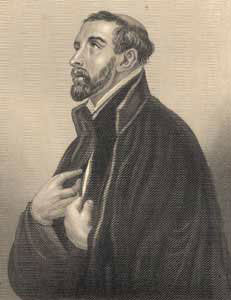
O God I Love you,
not simply to be saved,
and not because those who fail in love to you
will be punished with eternal fire.
You, you, my JESUS, have all-embraced me on the cross.
You have borne the nails, the lance, much ignominy,
numberless griefs, sweatings and anguish, and death,
and these on account of me and for me, a sinner.
Why therefore, should I not love you,
O, most loving JESUS?
Not that in heaven you shall save me,
nor lest for eternity you shall condemn me;
not with the hope of any reward,
but as you have loved me, so also will I love you,
only because you are my King,
and because you are my God.
Also check out:  St. Francis Xavier…for the love of neighbor
Tags: A Prayer of St. Francis Xavier O God, catholic, catholic podcast, catholic prayer, cathollc spirituality, eternal fire, jesuits, missionary
This entry was posted on Saturday, December 3rd, 2011 at 12:01 am
You can follow any responses to this entry through the RSS 2.0 feed.
It’s always a joy to talk with Fr. Robert Spitzer!  With his latest book , 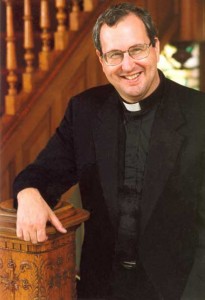 “Ten Universal Principles: A Brief Philosophy of the Life Issues” he has brought solid philosophy that is easy to read and understand. Not just for those who are interested in a prolife discussion, the “Ten Universal Principles” is perfect for anyone who wishes to grow in the use of faith and reason.  Fr. Spitzer addresses many questions including:  How do we make sense of life? How should we treat others? How should we reasonably be expected to be treated by others? When human life is at stake, are there reasonable principles we can rely on to guide our actions? How should our laws be framed to protect human life? What kind of society should be built?
“Ten Universal Principles: A Brief Philosophy of the Life Issues” he has brought solid philosophy that is easy to read and understand. Not just for those who are interested in a prolife discussion, the “Ten Universal Principles” is perfect for anyone who wishes to grow in the use of faith and reason.  Fr. Spitzer addresses many questions including:  How do we make sense of life? How should we treat others? How should we reasonably be expected to be treated by others? When human life is at stake, are there reasonable principles we can rely on to guide our actions? How should our laws be framed to protect human life? What kind of society should be built?
The Four Levels of Happiness described in the last section is worth it’s weight in gold.
[powerpress]
The Four Levels of Happiness®
Happiness is the only goal that people pursue for its own sake, which makes it an ideal lens for explaining why people and organizations behave as they do. The Four Levels of Happiness model shows leaders how to elevate the powerful drive for happiness and direct it toward shared goals, strong ethics, and great performance. Click here for a full description of the Four Levels.
You find the book here
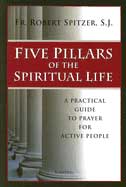 You can listen to more Fr. Spitzer as he discusses the “5 Pillars of the Spiritual Life” on the Inside the Pages interview #56
You can listen to more Fr. Spitzer as he discusses the “5 Pillars of the Spiritual Life” on the Inside the Pages interview #56
Tags: catholic, catholic podcast, catholic prayer, cathollc spirituality, faith, faith and reason, ignatius press, jesuits, joy, philosophy, prolife issues, Ten Universal Principles
This entry was posted on Tuesday, November 15th, 2011 at 7:27 am
You can follow any responses to this entry through the RSS 2.0 feed.
Blessed John Paul II reflection on the NMA:
The North American Martyrs, then, gave up their lives for the sake of the Gospel – in order to bring the faith to the native people whom they served. In fact, we are told that their faith was so strong that they yearned and prayed for the grace of martyrdom. Let us recall for a moment these heroic saints who are honoured in this place and who have left us a precious heritage.
Six of them were Jesuit priests from France: Jean de Brébeuf, Isaac Jogues, Gabriel Lalemant, Antoine Daniel, Charles Garnier and Noël Chabanel. Fired with love for Christ and inspired by Saint Ignatius of Loyola, Saint Francis Xavier and other great saints of the Society of Jesus, these priests came to the New World to proclaim the Gospel of Jesus Christ to the native peoples of this land. And they persevered to the end despite difficulties of every sort.
Two lay brothers were part of the missionary group: René Goupil and Jean de la Lande. With no less courage and fervour, they assisted the priests in their labours, showed great compassion and care for the Indians, and, laying down their lives, won for themselves the martyr’s crown.
And as these missionaries laid down their lives, they looked forward to a day when the native people would enjoy full maturity and exercise leadership in their Church. St. John de Brébeuf dreamed of a Church fully Catholic and fully Huron as well.
…
And today we are grateful for the part that the native peoples play, not only in the multicultural fabric of Canadian society, but in the life of the Catholic Church. Christ himself is incarnate in his Body, the Church. And through her action, the Church desires to assist all people “to bring forth from their own living tradition original expressions of Christian life, celebration and thought” (Ioannis Pauli PP. II, Catchesi Tradendae, 53).
Thus the one faith is expressed in different ways. There can be no question of adulterating the word of God or of emptying the Cross of its power, but rather of Christ animating the very centre of all culture. Thus, not only is Christianity relevant to the Indian people, but Christ, in the members of his Body, is himself Indian.
And the revival of Indian culture will be a revival of those true values which they have inherited and which are purified and ennobled by the Revelation of Jesus Christ. Through his Gospel Christ confirms the native peoples in their belief in God, their awareness of his presence, their ability to discover him in creation, their dependence on him, their desire to worship him, their sense of gratitude for the land, their responsible stewardship of the earth, their reverence for all his great works, their respect for their elders. The world needs to see these values – and so many more that they possess – pursued in the life of the community and made incarnate in a whole people.
Finally, it is in the Eucharistic sacrifice that Christ, joined with his members, offers up to his Father all that makes up their lives and cultures. In his Sacrifice he consolidates all his people in the unity of his Church and calls us all to reconciliation and peace.
As we go forward, let us commend ourselves to the intercession of the North American Martyrs, to Blessed Kateri Tekakwitha, Saint Joseph, Patron of Canada, and all the Saints, together with Mary the Queen of Saints. And in union with the whole Church – in the richness of her diversity and in the power of her unity – let us all proclaim by the witness of our own lives that “neither death nor life… nor any created thing, can ever come between us and the love of God made visible in Christ Jesus our Lord” (Rom. 8, 38-39).
Tags: catholic, catholic church, catholic podcast, catholic prayer, cathollc spirituality, jesuits, martyr, martyrdom, native peoples, The North American Martyrs
This entry was posted on Wednesday, October 19th, 2011 at 10:12 am
You can follow any responses to this entry through the RSS 2.0 feed.
VATICAN CITY, 9 FEB 2011 (VIS) – Benedict XVI dedicated his catechesis during this morning’s general audience to St. Peter Canisius, whom Leo XIII proclaimed as “the second apostle of Germany”, and who was subsequently canonised and proclaimed as a Doctor of the Church by Pius XI in 1925.
Born at Nijmegen in the Netherlands in 1521, Peter Canisius entered the Society of Jesus in 1543 and was ordained a priest in 1546. In 1548, St. Ignatius of Loyola sent him to complete his spiritual formation in Rome. A year later he moved to the Duchy of Bavaria where he became dean and rector of the University of Ingolstadt. Later he was administrator of the diocese of Vienna, Austria, where he practiced his pastoral ministry in hospitals and prisons. In the year 1566 he founded the College of Prague and, until 1569, was the first superior of the Jesuit province of upper Germany.
In this role he created a network of Jesuit communities in Germanic countries, especially schools, which became starting points for the Catholic Reformation. He participated in religious discussions with Protestant leaders, including Melanchthon, held in the city of Worms, acted as pontifical nuncio to Poland, participated in the two Diets of Augsburg in 1559 and in 1565, and attended the closing session of the Council of Trent. In 1580 he retired to Fribourg in Switzerland where he dedicated himself to writing and where he died in 1597. Peter Canisius also edited the complete works of Cyril of Alexandria and of St. Leo the Great, and the Letters of St. Jerome.
Among his most famous works were his three “Catechises”, written between 1555 and 1558. The first was aimed at students capable of understanding the basic notions of theology; the second at ordinary young people for their primary religious education; and the third at children with a medium- or secondary-school education.
“One characteristic of St. Peter Canisius”, said the Holy Father, was “that he was able to harmonise fidelity to dogmatic principles with the respect due to each individual. … In a historical period of deep confessional contrasts, he avoided severity and the rhetoric of anger, something fairly rare in discussions among Christians at that time, … and sought only to explain our spiritual roots and to revitalise faith in the Church”.
“In the works destined for the spiritual education of the masses, our saint insists on the importance of the liturgy, … the rites of Mass and the other Sacraments. However, at the same time, he is careful to show the faithful the importance and beauty of individual daily prayer to accompany and permeate participation in the Church’s public worship”, said Benedict XVI, pointing our that “this exhortation and this methodology maintain all their value, especially after being authoritatively re-presented by Vatican Council II”.
Peter Canisius “clearly teaches that apostolic ministry is incisive and produces fruits of salvation in people’s hearts only if the preacher is a personal witness of Jesus and knows how to become His instrument, closely bound to Him through faith in His Gospel and in His Church, through a morally coherent life and incessant prayer”. AG/VIS 20110209 (530)
Tags: catholic, catholic podcast, catholic prayer, cathollc spirituality, doctor of the church, jesuits, pope benedict xvi, society of jesus, st peter canisius
This entry was posted on Wednesday, February 9th, 2011 at 9:13 am
You can follow any responses to this entry through the RSS 2.0 feed.

